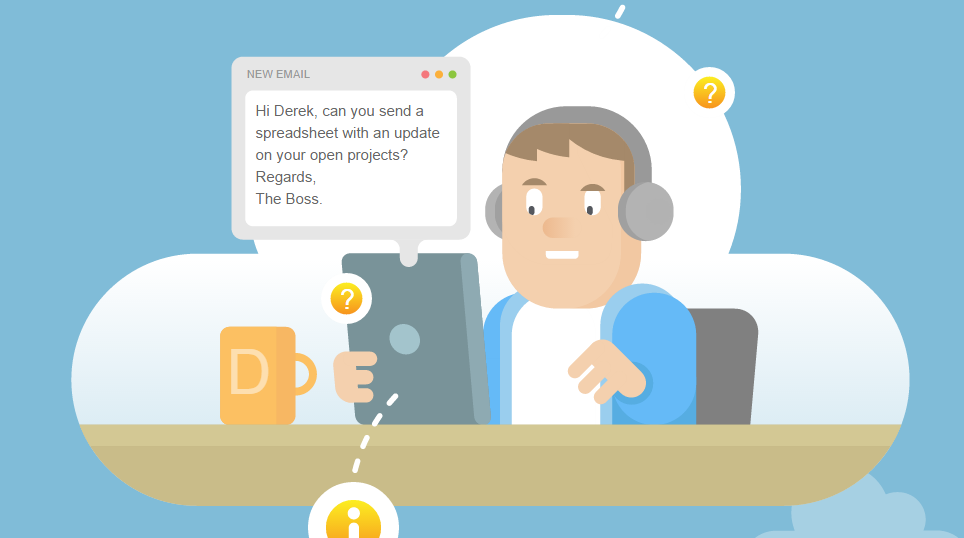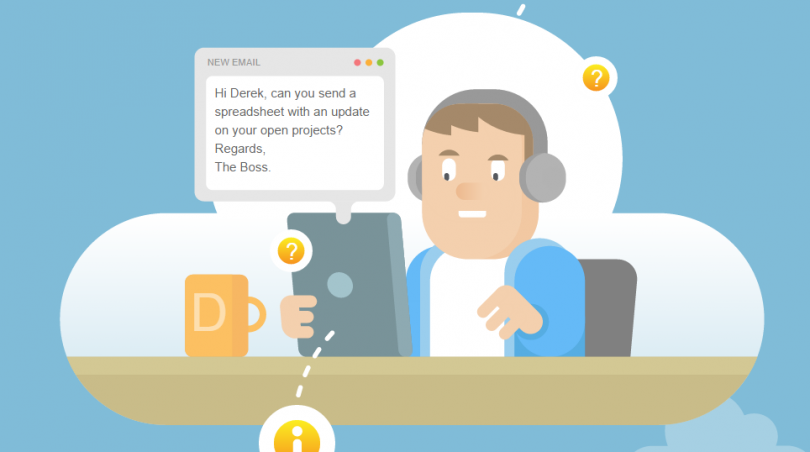This post is sponsored by Tech Page One. Insights from the evolving world of tech.
An infographic on BYOD i.e. Bring your own device was brought to my attention and that led me to this article. BYOD is a growing trend and I have seen it grow in India, not so much the UK yet. But it is a growing trend and as we become a more technology savvy human race, this trend might soon become normal practice.
What is BYOD?
BYOD stands for Bring Your Own Device. Via Wikipedia: “It refers to the policy of permitting employees to bring personally owned mobile devices (laptops, tablets, and smart phones) to their workplace, and to use those devices to access privileged company information and applications.”
Essentially it means, you can use your own device to access any data from the business. That data can be anything, emails, documents, big data etc.
For e.g. looking at the infographic on BYOD, Derek, the subject is asked to provide reports on his projects. In this case, he could be in transit or home (without a work laptop). But thanks to BYOD practice that his employers work to, he can use company data (project status, SAP info on hours spent, etc) to create reports on his own device and send it to his boss.

At the moment, this is almost unthinkable. No one uses their own device for work purposes because of data issues and myths about data security.
Does BYOD keep data safe?
Good question, it is easy to think, by using BYOD principles we might compromise data. And that is not the case, not if it is backed up by strong data policy as well.
What is BYOD? It is your own device that can access privileged data. If that data is segregated, anonymised and secured then good data policies will not affect whether you use BYOD principles or not.
For example in Derek’s case the below is true! For full details see this infographic on BYOD
Will anyone work on their own BYOD device and not just play?
Valid question. How does one make sure that employees are working on their device and not just playing?
If a company holds all the information over cloud – which is generally good practice for collaboration and business continuity then connecting to a private cloud at work can limit people to using their devices for work purposes only because systems administrators can monitor traffic.
Using a private cloud allows the secure transfer of data because the connection is direct from device to server over a private network.
To see a full working example of the collaborative power of BYOD principle, cloud storage and good data policies, see this infographic on BYOD. The infographic gives examples of were cloud storage is currently used and how it helps businesses etc.
As for BYOD – it is already in use in academic institutions. Think of the Blackboard platform, where students can access privileged information (lessons, lectures, etc) via their own device. This is an example of BYOD. A very simple one, but it does work that way.
Another example of BYOD and cloud storage working well is, companies using Google Apps to configure their emails. For example, my email is faizan@careergeekblog.com, but I access it through gmail.com on my phone. Because Gmail delivers software as a service via cloud and by using my own device (smartphone) I am using BYOD and cloud storage together.
Anyways, have a look at this infographic on BYOD to understand this concept a little bit more. Maybe you have an idea that leverages this concept? Do share it in the comments section.
This post is sponsored by Tech Page One. Insights from the evolving world of tech.


